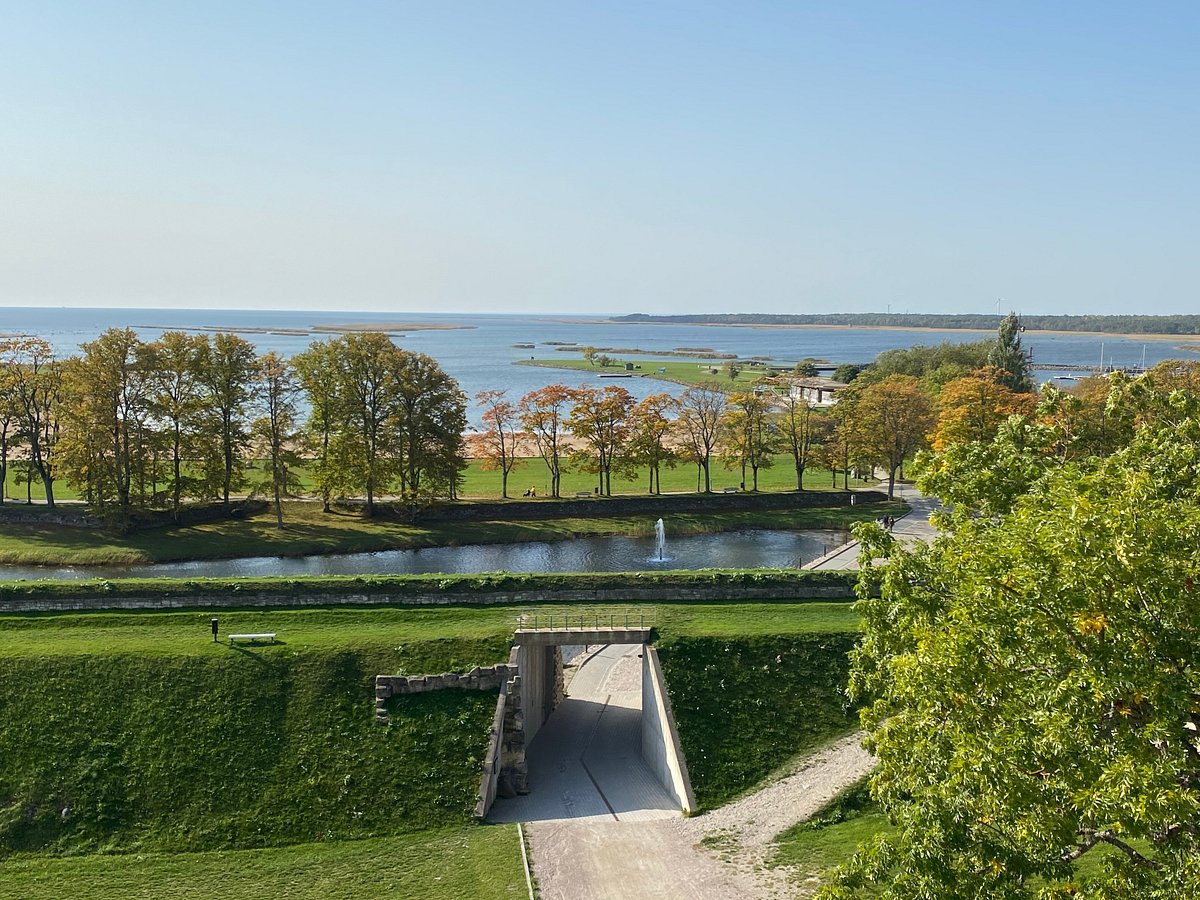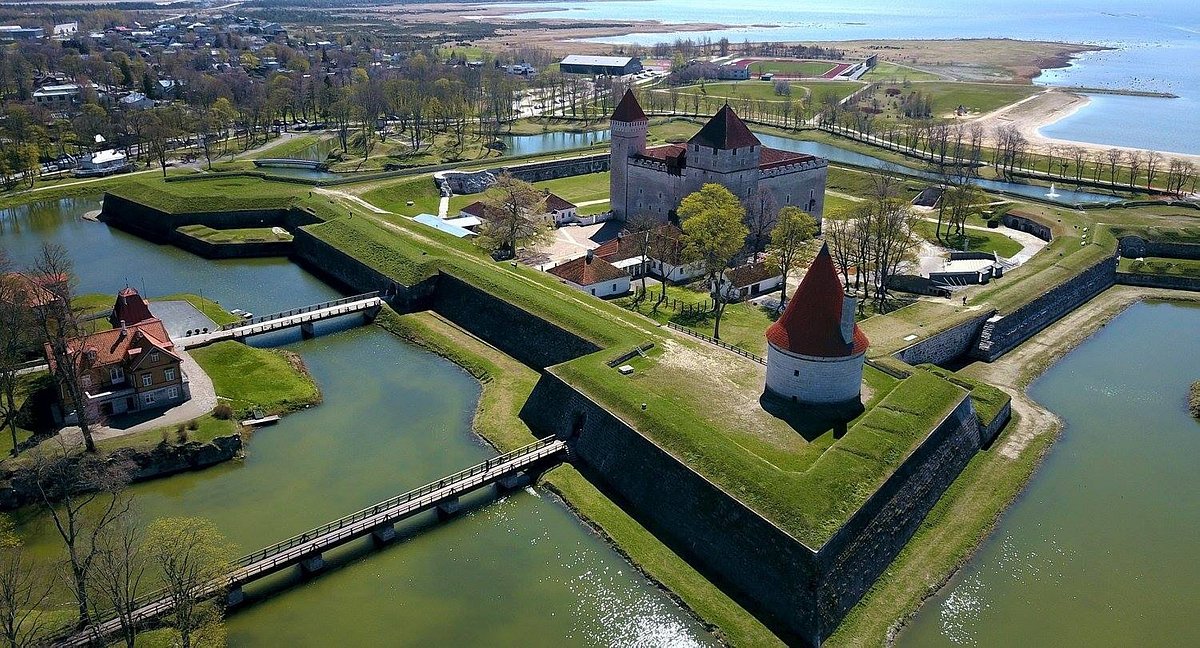Kuressaare Castle stands as a testament to the island’s rich history and architectural grandeur. This medieval fortress, also known as Arensburg, is one of the best-preserved castles in the Baltic region and a must-visit destination for history enthusiasts and travelers alike.
Standing sentinel on the Estonian island of Saaremaa is Kuressaare Castle, a magnificent structure steeped in history and architectural grandeur. Here’s why this medieval marvel should be on your travel itinerary.
Kuressaare Castle Historical Overview
- Origins: Kuressaare Castle was originally built in the late 14th century by the Teutonic Order. Its primary purpose was to serve as a stronghold and administrative center for the region. Over the centuries, it has undergone numerous modifications and restorations, reflecting the various political and military influences that have shaped its history.
- Architecture: The castle is a fine example of medieval architecture with its sturdy stone walls, moat, and defensive towers. It features a rectangular layout with a central courtyard, surrounded by a series of interconnected buildings that served as the residence for the bishop and his retinue.
- Medieval Might: Construction began in the 1380s by the Teutonic Order, a powerful German monastic military order. The castle served as a crucial stronghold, guarding the island against invaders and asserting dominance over the region.
- Shifting Fortunes: Over the centuries, the castle changed hands several times, reflecting the turbulent history of the island. It was occupied by Danes, Swedes, and Russians, each leaving their mark on its architecture and character.
- Preserved Legacy: Today, Kuressaare Castle stands as one of the best-preserved medieval fortifications in Estonia. It’s a testament to the island’s resilience and a captivating window into its past.
Key Features

- Museum: Today, Kuressaare Castle houses the Saaremaa Museum, which offers a comprehensive look into the island’s history, culture, and natural environment. The museum’s exhibits range from archaeological finds and medieval artifacts to displays on local wildlife and folklore.
- Chapel: The castle’s chapel is a highlight for visitors, showcasing beautiful Gothic architecture and providing a serene space for reflection. Its well-preserved interior and historical significance add to the castle’s charm.
- Gothic Grandeur: The castle’s design exemplifies late Gothic architecture. The central “convent building” is a powerful square structure with a simple yet imposing form. The towering northern defense tower, reaching 37 meters, offers panoramic views of the surroundings.
- Fortified Walls: Surrounding the castle is a network of bastions, curtains, ravelins, and a moat, remnants of its defensive purpose. Explore these fortifications and imagine the battles that once unfolded here.
- Defense Structures: The castle’s fortifications, including the towers and bastions, are accessible to visitors. These structures offer a glimpse into the defensive strategies of the past and provide panoramic views of the surrounding landscape.
- Interactive Exhibits: Modern interactive exhibits and multimedia displays make the history of Kuressaare Castle engaging and accessible to visitors of all ages. These features bring the past to life and enhance the educational experience.
Events and Activities
- Medieval Days: Kuressaare Castle hosts an annual Medieval Days festival, where the fortress comes alive with reenactments, traditional crafts, and performances. This event provides a unique opportunity to experience medieval life and culture firsthand.
- Guided Tours: Expert-led guided tours are available, offering in-depth insights into the castle’s history, architecture, and the stories of its inhabitants. These tours are an excellent way to gain a deeper understanding of the site’s significance.
- Cultural Events: Throughout the year, the castle serves as a venue for various cultural events, including concerts, exhibitions, and theatrical performances. These events highlight the vibrant cultural heritage of Saaremaa and add a dynamic element to the visitor experience.
Visiting Information
- Accessibility: Kuressaare Castle is easily accessible from the town of Kuressaare, with ample parking and clear signage directing visitors to the site. The castle is also wheelchair accessible, ensuring that everyone can enjoy its historical treasures.
- Opening Hours and Tickets: The castle is open year-round, with extended hours during the peak tourist season. Ticket prices vary, with discounts available for students, seniors, and families. Check the official website for the latest information on opening hours and admission fees.
Kuressaare Castle A Destination for All:
- Family Fun: The museum offers interactive exhibits and activities that will engage children. Treasure hunts and archery demonstrations make history come alive for young visitors.
- Cultural Immersion: Delve into the unique heritage of Saaremaa Island. The museum sheds light on the island’s traditional crafts, folklore, and the lives of its people throughout the ages.
- Breathtaking Scenery: Kuressaare Castle is surrounded by a beautiful moat and verdant grounds. Take a stroll around the perimeter and enjoy the scenic setting.
Whether you’re a history buff, an architecture enthusiast, or simply seeking a captivating experience, Kuressaare Castle has something for everyone. So, on your next adventure to Estonia, be sure to include this remarkable landmark on your itinerary.

0 Comment